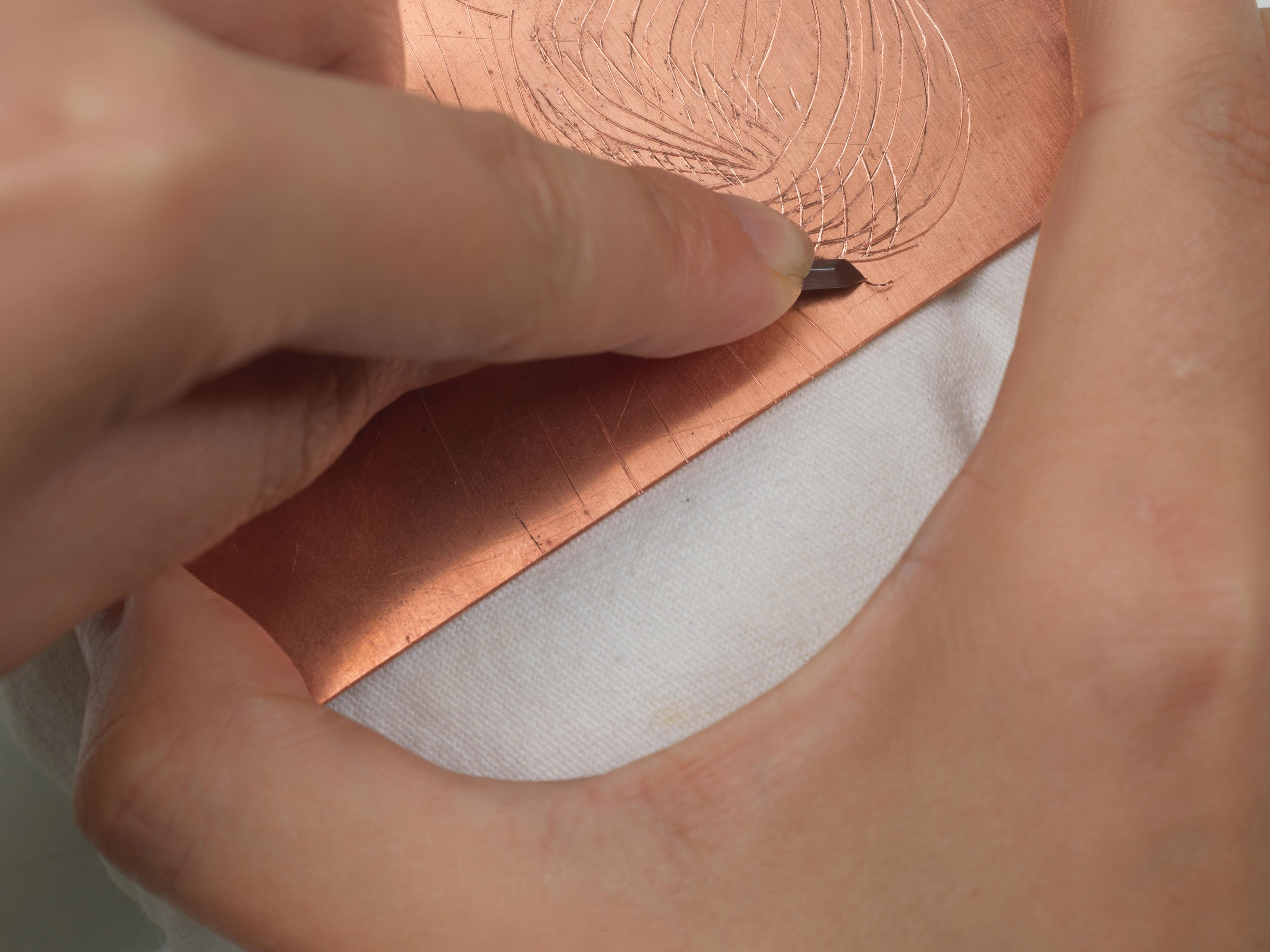Engraving is an intaglio printmaking process in which lines are cut into a metal plate in order to hold the ink. In engraving, the plate can be made of copper or zinc.

An assortment of engraving tools
The metal plate is first polished to remove all scratches and imperfections from the surface so that only the intentional lines will be printed. When making an engraving, the printmaker incises or cuts a composition directly into the surface of a metal plate using a sharp tool, known as a burin: a steel shaft ending in a beveled diamond-shaped tip that is set into a rounded wooden handle.

The printmaker holds the burin by placing the wooden handle against the palm of their hand and grips the shaft with their thumb and third finger. The burin is then set to engage with the surface of the plate. When pressure is applied, the burin cuts away a thin layer of the metal to create a recessed line or groove in the plate. Cutting into the plate also results in the displacement of a thin curl of metal residue.
Different sizes of burins can affect the size of the lines; the pressure the printmaker applies to the burin can also be used to create thinner or thicker grooves in the plate. Creating smooth lines requires both strength and control on the part of the printmaker.
The metal plate is placed on a sandbag or pillow by the printmaker to help manipulate and move the plate, especially when a composition requires curved lines.
To enhance a purely linear composition with tone, the printmaker applies a system of hatching—lines, dots, and dashes, among other kinds of markings, placed close together to create denser areas in the print that hold more ink. The closer the marks are placed together, the darker those areas will appear. The printmaker must take care not to cut the lines or the markings too closely together so that the ink does not bleed between them.
Once the full composition has been cut into the plate, it is ready to be inked. A cloth ball, cardboard tab, or equivalent material is used to gently spread ink across the whole face of the plate; the same material is used to remove most of the excess ink from the surface. The plate is further cleaned using a tarlatan rag (heavily starched cheesecloth).
As a last measure, printmakers often use their palms or the sides of their hands to wipe away the last bits of ink. In certain cases, a printmaker can choose not to clean the plate entirely, but to leave a thin layer of ink on the plate to create tone.
After the plate is wiped to the desired level, it is ready for printing. While some early intaglio prints appear to have been produced by simply pressing the paper against the plate by hand, in most cases the pressure required to force the paper into the finely cut lines entailed the use of a special press equipped with rollers.
The plate is placed on the bed of the press with the ink side up, and a sheet of dampened paper is placed on top. Before the plate and sheet are moved through the press together, they are covered with printing blankets, often made of felt, to soften the pressure on the metal plate.

Liz Zanis (American, born 1980). Practice Cloud, 2018. Engraving and copper plate. Courtesy of the artist
Once the plate has been run through the press, the resulting impression on paper displays a reverse image of the original engraved composition. The pressure of the press not only forces the ink onto the damp paper, but also produces an outline of the outer edges of the metal plate in the paper, known as a plate mark.
See a selection of engravings in The Met collection.
